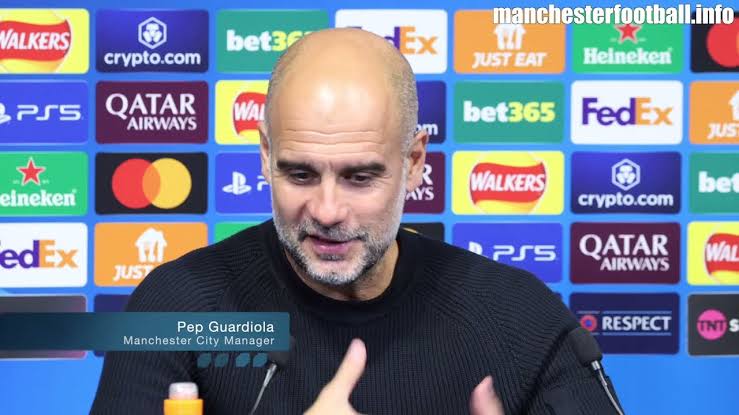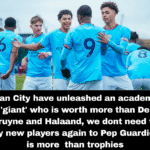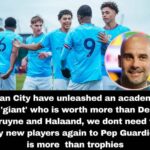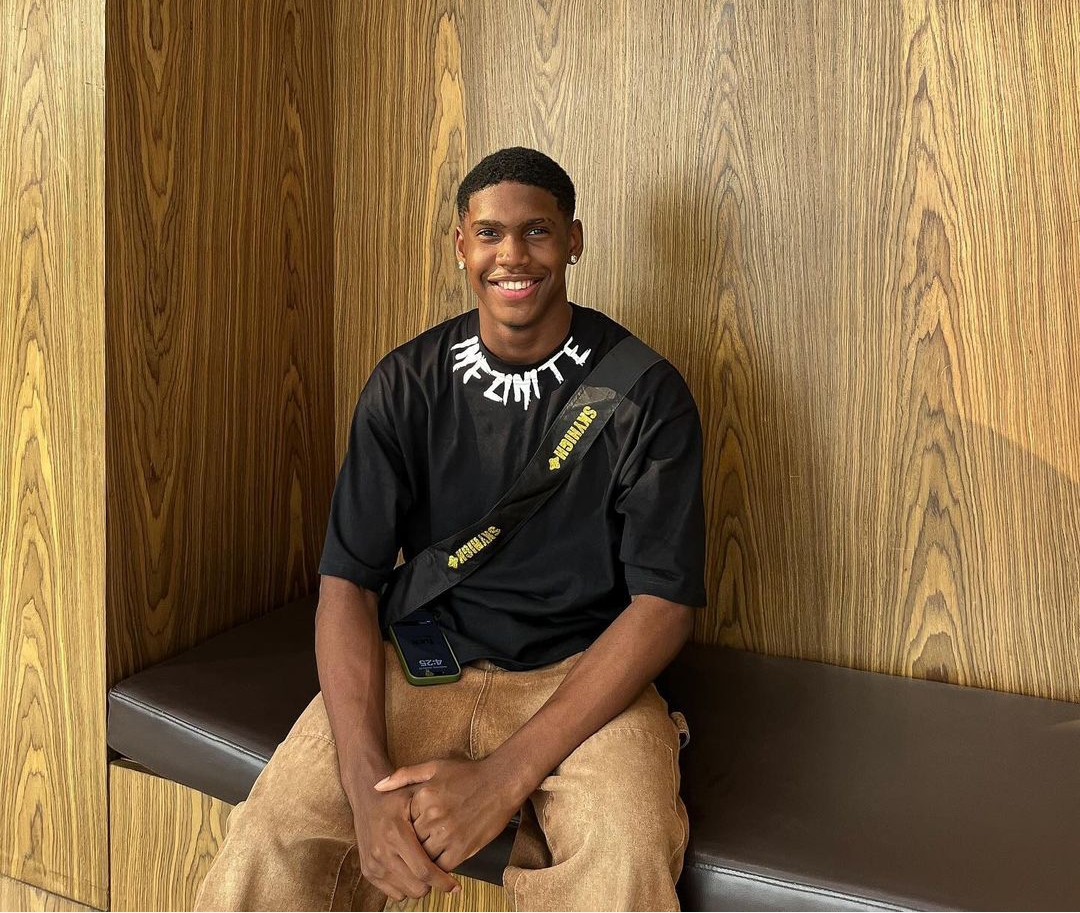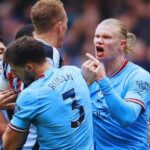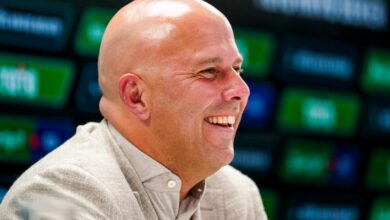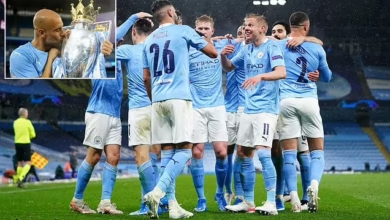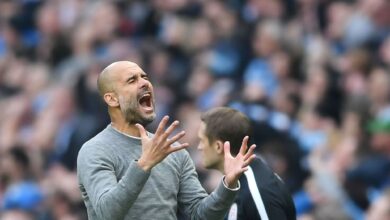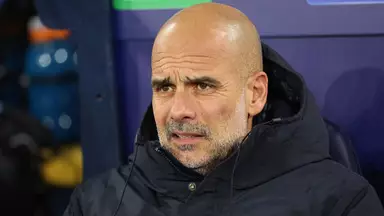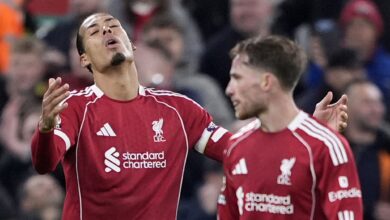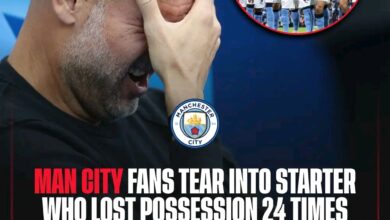Man City have unleashed an academy ‘giant Better than Kelvin Debruyne
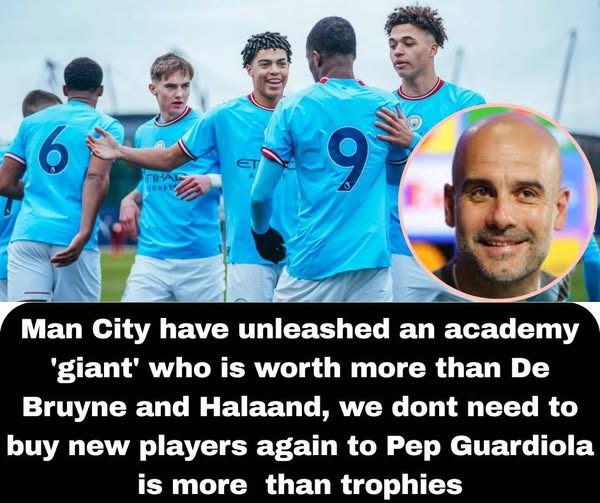
In the constellation of superstars that illuminate Manchester City’s billion-pound squad, academy graduates rarely shine bright enough to command attention. Yet as the 2024-25 season approaches its climactic finale, with silverware hanging precariously in the balance, one narrative has captivated the football world: the extraordinary metamorphosis of 20-year-old Nico O’Reilly. His transformation from struggling attacking midfielder to Pep Guardiola’s tactical masterstroke at left-back represents perhaps the most compelling underdog story in modern football.
The Academy’s Crown Jewel
Manchester City’s academy, housed within the £200 million City Football Academy complex, stands as a monument to modern youth development. This season alone, it nearly delivered consecutive FA Youth Cup triumphs, falling heartbreakingly short against Aston Villa in Monday’s final. Despite this setback, the academy’s achievements remain extraordinary. A remarkable 27-game winning streak at Under-18 level demonstrates the exceptional talent being cultivated behind the scenes, with potential silverware still beckoning for both Under-18 and Under-21 squads before the season concludes.
However, amid these collective triumphs, O’Reilly’s individual odyssey stands as the academy’s masterpiece—a testament to patience, perseverance, and the club’s unwavering faith in talent that requires time to flourish. His journey challenges conventional wisdom about linear progression in football development, revealing instead a more complex narrative of setbacks, breakthroughs, and ultimate vindication.
The Unconventional Path
O’Reilly’s ascent to first-team prominence defies the sanitized success stories typically constructed in hindsight. Speaking candidly with academy personnel reveals a far more nuanced tale—one where extraordinary potential was recognized early, yet significant obstacles threatened to derail his entire trajectory.
“He’s had a journey in terms of actual development. It’s not like a linear journey,” Under-21s coach Ben Wilkinson revealed to the Manchester Evening News, providing rare insight into the challenges that shaped O’Reilly’s formative years. This honest assessment illuminates the reality behind academy development—a process far more complex than the smooth progressions often portrayed in media narratives.
The critical juncture arrived during his scholarship period. After completing his inaugural year, serious questions emerged regarding his developmental trajectory. While his technical prowess had never been questioned, physical concerns created genuine uncertainty about his ability to transition to senior football. The academy faced a crossroads: persist with a promising but physically underdeveloped talent, or redirect resources toward more immediately viable prospects.
“In his second year of Under-18s two years ago, he stayed with the Under-18s rather than going up because he was a boy who, when you looked at him, he still hadn’t grown anywhere into his body,” Wilkinson explained. “He needed a little bit more time because you could see that he was just starting to come and he had the potential to be a real physical specimen, but he was a long way from being there. He needed careful management in that year as he grew, to try and keep him fit and adapt to his body.”
The Philosophy of Patience
This patient approach exemplifies Manchester City’s youth development philosophy under Guardiola’s stewardship. Rather than accelerating talented youngsters prematurely—a practice that historically leads to burnout and unfulfilled potential across football—the club implemented a bespoke program accommodating O’Reilly’s physical maturation while nurturing his technical gifts.
Academy coaches collaborated meticulously with the sports science department to create an individualized training regimen allowing O’Reilly’s frame to develop naturally while progressively increasing physical demands. This careful calibration of training load, recovery protocols, and technical development proved transformative, representing a masterclass in long-term player development over short-term gains.
The methodology involved specialized resistance training focused on functional strength rather than bulk, extensive movement pattern work to improve efficiency and reduce injury risk, and meticulous nutritional strategies supporting physical development without compromising natural athleticism. This holistic approach reflected City’s understanding that physical development, particularly for late-maturing players, requires patience and precision rather than rushed intervention.
The Transformation
By summer 2024, O’Reilly had undergone a remarkable metamorphosis. The gangly teenager had evolved into what academy coaches described as “a giant, a fantastic athlete.” This physical transformation, combined with his already exceptional technical foundation, caught Guardiola’s discerning eye during pre-season preparations.
The Catalan manager, renowned for exacting standards and uncompromising player development approaches, saw sufficient quality to include O’Reilly in the senior squad’s pre-season tour—a significant vote of confidence in a player considered physically questionable mere months earlier. This inclusion represented more than ceremonial recognition; it signaled genuine belief in O’Reilly’s potential contribution to first-team ambitions.
“Pep doesn’t hang around with people that don’t add to the squad,” noted an academy coach closely monitoring O’Reilly’s development. “If you’re young and excited to come in, if you don’t produce or behave like a first team player, you don’t last long.” This assessment highlights often-overlooked aspects of breakthrough success at elite clubs: beyond technical and physical attributes, psychological resilience required to train alongside world-class players daily—often with limited playing opportunities—tests even the most talented prospects’ mental fortitude.
The Test of Patience
For much of the 2024-25 season, O’Reilly demonstrated this patience abundantly. Despite formal first-team promotion, meaningful minutes remained elusive. His start against Salford City in the FA Cup in January represented just his third appearance of the campaign. As recently as March, the youngster found himself excluded from matchday squads entirely as Guardiola prioritized the 20 players he deemed most crucial to the team’s ambitions.
This period tested O’Reilly’s resolve profoundly. Training daily with international stars while watching from the sidelines could have demoralized a less determined individual. However, academy staff noticed no decline in his training intensity or professional attitude. Instead, he used this time to refine his understanding of Guardiola’s tactical requirements, studying match footage and absorbing coaching instructions with meticulous attention to detail.
The isolation from first-team action paradoxically accelerated his tactical education. Without the pressure of immediate performance, O’Reilly could focus entirely on understanding positional play, movement patterns, and the intricate responsibilities within Guardiola’s system. This theoretical foundation would prove invaluable when opportunity finally arrived.
The Bournemouth Breakthrough
Everything changed on that pivotal March afternoon at the Vitality Stadium. With City trailing 1-0 to Bournemouth in their FA Cup quarter-final—their unprecedented second consecutive domestic treble hopes hanging by a thread—Guardiola made what seemed, momentarily, a desperate substitution. O’Reilly was introduced at left-back, a position entirely foreign to the natural attacking midfielder.
What followed has since entered City folklore. The academy graduate delivered two match-winning assists, orchestrating a dramatic comeback that preserved the team’s cup ambitions while fundamentally altering his standing within the squad. The tactical gamble revealed unexpected versatility in O’Reilly’s game that has since become invaluable to a team battling defensive injuries.
“Sometimes in football, necessity breeds invention,” explains former City defender Joleon Lescott, who has followed O’Reilly’s emergence closely. “Pep has always valued players who can understand and implement multiple positions. What’s remarkable about Nico is how quickly he’s adapted to the defensive responsibilities while still offering so much going forward. It’s a testament to both his intelligence and the coaching he’s received throughout the academy system.”
The performance against Bournemouth demonstrated several crucial qualities: tactical adaptability, composure under pressure, and the ability to influence games decisively. More importantly, it showcased O’Reilly’s capacity to understand and execute Guardiola’s tactical instructions in real-time, even in an unfamiliar position.
Establishing Himself
In the seven matches since that Bournemouth revelation, O’Reilly has been an ever-present in the starting lineup—remarkably establishing himself ahead of established internationals like John Stones and Nathan Ake in terms of minutes played. More impressively, City have recorded five clean sheets in those seven fixtures, conceding goals in just two matches—a defensive record that has rejuvenated their season across multiple competitions.
This consistency demonstrates that his Bournemouth performance was no fluke. Instead, it revealed a player whose development had reached the point where he could contribute meaningfully at the highest level. The statistical evidence supports this assessment: City’s defensive metrics improved markedly with O’Reilly in the lineup, while their attacking fluidity remained uncompromised.
His integration into the first team has been seamless in ways that defy his limited experience. Senior players have embraced his presence, recognizing both his talent and professionalism. Captain Kyle Walker has been particularly supportive, often seen providing tactical guidance during matches and training sessions.
Tactical Innovation
O’Reilly’s adaptation to left-back exemplifies Guardiola’s evolving tactical approach in his final years at the Etihad. The position, in Guardiola’s system, has become increasingly nuanced—requiring not just defensive solidity but the ability to invert into midfield spaces, create numerical overloads, and contribute meaningfully to the team’s possession structure.
Former City captain Vincent Kompany, now establishing himself as a promising manager, recently analyzed O’Reilly’s positional play: “What’s exceptional is his spatial awareness. When you convert from an attacking midfielder to a defender, that’s usually the biggest challenge—understanding when to hold your position and when to advance. Nico seems to have a natural instinct for it, which is rare.”
This spatial intelligence allows O’Reilly to transition seamlessly between traditional left-back duties and central midfield responsibilities—often within the same phase of play. Against Arsenal last month, tracking data revealed he spent almost 40% of City’s possession in central midfield zones, before diligently returning to his defensive station when the team lost the ball.
The role draws comparisons to how Guardiola previously utilized Philipp Lahm at Bayern Munich and, more recently, João Cancelo during City’s dominant 2021-22 campaign. However, O’Reilly brings his own distinct interpretation—one perhaps reflecting the evolution of Guardiola’s thinking in his ninth season at the club.
“He’s providing solutions we didn’t know we needed,” admitted one of Guardiola’s coaching staff. “When we lost João Cancelo and then had injuries to Nathan Ake and John Stones, we were concerned about how to maintain our build-up patterns. Nico has different qualities—he’s not as explosive as Cancelo but he’s more patient in possession, which has actually helped our control in certain games.”
Physical Development Mastery
Behind O’Reilly’s tactical adaptation lies an equally remarkable physical metamorphosis. Academy staff who worked with him during his developmental years speak of a methodical approach to building his frame—one prioritizing long-term athletic development over short-term gains.
“Three years ago, you wouldn’t have recognized him,” reveals a strength and conditioning coach who worked closely with O’Reilly. “He was all potential—tall but slight, with a frame that clearly had room to develop but hadn’t filled out yet. What’s impressive is how he’s embraced every aspect of the physical program we designed for him.”
The comprehensive program included specialized resistance training focused on building functional strength rather than sheer bulk, extensive work on movement patterns to improve efficiency and reduce injury risk, and meticulous attention to nutritional strategies supporting his physical development without compromising natural athleticism.
Results are evident not just in O’Reilly’s more robust appearance but in performance metrics tracked by City’s sports science department. His top speed has increased by nearly 7% over the past two seasons, while his recovery rates between high-intensity efforts have improved dramatically—a crucial asset in Guardiola’s system, which demands repeated sprints and quick transitions between attacking and defensive phases.
Perhaps most significantly for a converted midfielder playing defense, his dueling statistics have shown remarkable improvement. In his seven starts at left-back, O’Reilly has won 68% of his defensive challenges—a figure comparing favorably even with specialist defenders across the Premier League.
Cultural Significance
Beyond tactical and physical dimensions lies cultural significance that resonates deeply within the club’s ecosystem. In an era where Manchester City’s recruitment strategy naturally focuses on acquiring established world-class talent, the successful integration of an academy graduate provides powerful affirmation of the club’s developmental philosophy.
“It sends such a positive message through the academy,” explains Brian Barry-Murphy, who oversees City’s Elite Development Squad. “When younger players see someone like Nico not just making appearances but actually influencing big games and earning the manager’s trust, it validates everything we tell them about there being a pathway if they’re good enough.”
This sentiment is echoed by Wilkinson: “The most powerful thing is that he’s not just playing—he’s adding something. That’s the standard here. It’s not enough to just not make mistakes; you have to actively enhance the team, even as a young player coming in.”
For City’s hierarchy, O’Reilly’s breakthrough represents significant return on investment. The club has invested hundreds of millions in creating one of the world’s most sophisticated youth development infrastructures—from the £200 million City Football Academy campus to the network of sister clubs providing developmental pathways globally.
While this infrastructure has successfully produced saleable assets—academy graduates who have forged careers elsewhere after generating transfer fees—the ultimate goal has always been developing players capable of impacting the first team. Each academy graduate who establishes themselves saves the club tens of millions in potential transfer fees—particularly valuable in an era of increased financial regulation.
The Guardiola Factor
No analysis of O’Reilly’s emergence would be complete without examining Guardiola’s role in the process. The manager’s willingness to trust a 20-year-old converted midfielder in crucial fixtures during the season’s defining period speaks volumes about both his evaluation of the player and his own evolving philosophy.
“I think Pep has always been mischaracterized as someone who doesn’t trust young players,” suggests Txiki Begiristain, City’s Director of Football. “The reality is that he has the highest standards for every player, regardless of age. When someone like Nico shows the right mentality, tactical understanding, and quality, Pep has no hesitation.”
This perspective is reinforced by O’Reilly’s own recollection of conversations with the manager: “He told me he doesn’t see age, he sees solutions. When he first suggested I could play at left-back, he didn’t frame it as an experiment or a temporary fix. He talked about it as an opportunity to express myself differently, to see the game from new angles.”
Guardiola’s approach to O’Reilly’s development has been characterized by this blend of challenge and support—pushing the young player into unfamiliar territory while providing the tactical framework and confidence needed to succeed there. It’s a methodology that has unlocked unexpected dimensions in O’Reilly’s game while addressing a positional need within the squad.
Legacy in the Making
As Guardiola potentially approaches his final months at the Etihad—amid increasing speculation about his future beyond his current contract—O’Reilly’s emergence may represent one of his most enduring legacies: evidence that even at a club with City’s resources, the development of homegrown talent remains both a priority and a possibility.
The young defender’s journey from physically questionable prospect to first-team regular encapsulates everything Manchester City aspires to achieve through their academy system. It demonstrates that with proper investment, patience, and expertise, even the most challenging developmental cases can flourish into valuable assets.
O’Reilly’s story continues to unfold, with each appearance adding new chapters to an already remarkable narrative. As Manchester City pursue multiple trophies in the season’s final stretch, their academy graduate stands as both a symbol of their developmental success and a crucial component of their competitive ambitions. In the constellation of stars at the Etihad, Nico O’Reilly has earned his place not through astronomical transfer fees or established reputation, but through the timeless virtues of perseverance, adaptability, and unwavering determination.
